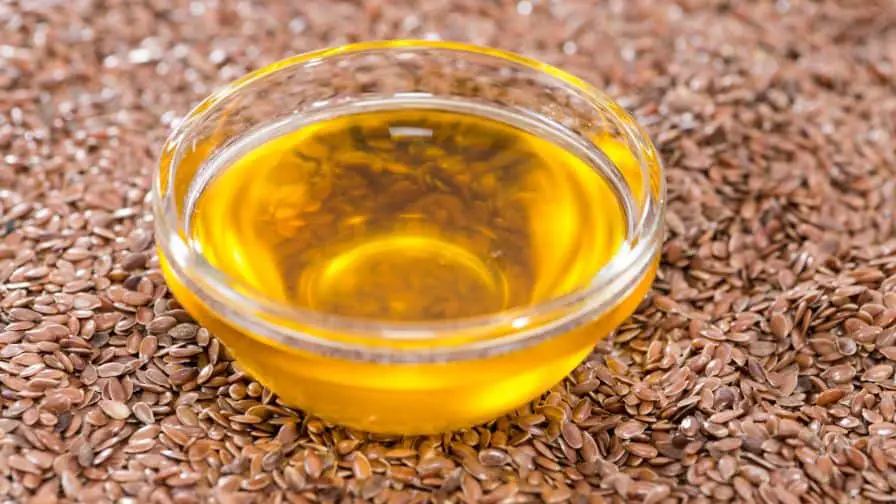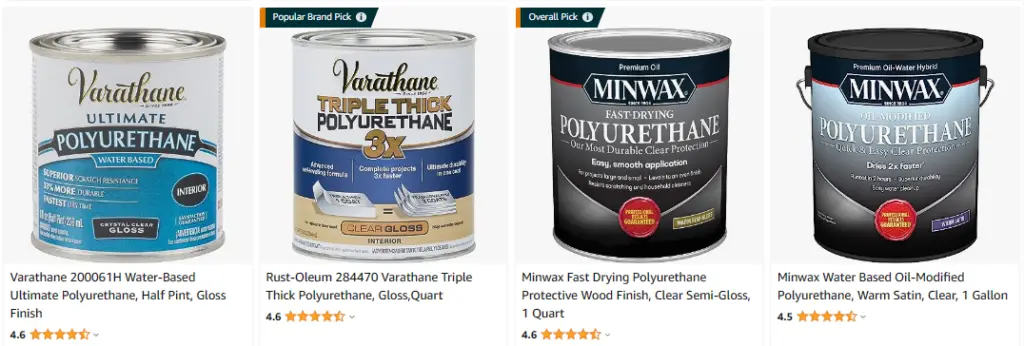
When it comes to protecting your wooden furniture, you have a lot of options. You can use a sealant, wax, or varnish. One of the most popular choices is boiled linseed oil. It’s natural, durable, and easy to apply. But can you put polyurethane over boiled linseed oil?
In this blog post, we will answer that question and give you some tips on how to get the best results!

Click Here To Check The Pricing On Amazon
Can You Put Polyurethane Over Boiled Linseed Oil, And If So, What Are The Best Results To Expect?
Yes. The results will depend on the type of finish you are looking for. When you want a high-gloss finish, applying polyurethane over the linseed oil will give you the best results! However, as you are looking for a more natural look, then it is best to apply a thin layer of polyurethane. This will give you the desired look while still protecting your investment.
What Is Boiled Linseed Oil And Why Is It A Popular Choice For Furniture Protection?
Linseed oil is extracted from flax seeds and has been used for centuries in a variety of applications. It’s a popular choice for furniture protection because it’s durable and provides a rich and natural luster. Boiled linseed oil has heat to speed up the drying time. This makes it a great option for those who want to protect their furniture without having to wait for a long time.
It’s also less likely to attract dust and dirt, making it ideal for people with allergies or sensitivities. When applied correctly, boiled linseed oil can protect against water damage, scratches, and stains. It’s important to note that this type of oil can darken over time. So it’s best to test it on a small area first.
Whether you’re looking to protect your investment or want a natural way to keep your furniture looking its best, boiled linseed oil is worth considering. Give it a try today and see the difference for yourself!
Discover 1,000 Hours Of Step-By-Step Woodworking Videos

It’s called Woodwork101. A database of detailed videos and blueprints in crystal clear, mouth-watering HD that will take you by the hand and show you that DIY home projects done the right way are easy, fun, and always of top quality… turning a dream into reality in a heartbeat. Getting you that perfect build each and every time.
How Do You Apply Boiled Linseed Oil And How Long Does It Take To Dry?
Subscribe to Fabian’s Tiny Workshop
Applying boiled linseed oil is a simple process. You can use a brush, rag, or even your bare hands to put it. The key is to make sure that you evenly distribute the oil over the surface. You don’t want to miss any spots or else you’ll end up with an uneven finish.
Once you applied the oil, it’ll take about 24 hours for it to dry. During that time, you should keep any pets or kids away from the area. You don’t want anyone to accidentally ruin your hard work. Once it’s dry, you can enjoy your beautiful new finish.
What Are Some Of The Benefits Of Using Boiled Linseed Oil On Wooden Furniture?
Linseed oil is from the dried and ripened seeds of the flax plant. For centuries, people use this natural oil to treat a variety of ailments and conditions. Today, boiled linseed oil is commonly used as a finish for wooden furniture.
There are several benefits to using boiled linseed oil on wooden furniture.
One benefit is that it helps to protect the wood from moisture. This is especially important in areas of high humidity, such as kitchens and bathrooms. Boiled linseed oil also helps to protect against scratches and other damage.
Another benefit of using boiled linseed oil on wooden furniture is that it can help to restore the wood’s natural color. Over time, sunlight and other factors can cause the wood to become faded or discolored. Applying a coat of boiled linseed oil can help to restore the wood’s original color.
Finally, it can help to give it a lustrous sheen. This is because boiled linseed oil contains a natural wax. This wax can help to give the wood a beautiful shine. Additionally, it can help to protect the wood from dirt and other debris.
When you’re looking for a way to protect your wooden furniture and restore its natural beauty, consider using boiled linseed oil. It’s a natural product that can help to keep your furniture looking its best for years to come!
How Can You Prevent Your Furniture From Becoming Scratched Or Stained In The Future?
The best way to protect your furniture is to keep it clean and free of dirt, dust, and other debris. Regular cleaning will help to prolong the life of your furniture and keep it looking its best! In addition, you should try to avoid placing your furniture in direct sunlight, as this can cause fading and damage over time. When you do need to move your furniture around, lift it rather than dragging it across the floor. This will help to avoid scratches and scuffs.
Finally, when you have pets, keep their nails trimmed and their claws clean to avoid any accidental damage.
With a little care and attention, your furniture can last for years to come!
[Video] 3 Most Common Mistakes
When Setting Up Shop

A woodworking friend of mine shared this video by Ralph Chapman with me that helped him set up his workshop.
The video explains the benefits of Ralph Chapman’s guide about setting up an affordable workshop and avoiding the most common mistakes offers to anyone interested in woodworking.
Will Polyurethane Stick To Linseed Oil?
Subscribe to U Do It
Yes, polyurethane will stick to linseed oil. However, there are a few things you need to take into account.
First, let the linseed oil cure for at least 24 hours before applying polyurethane.
Second, sand the surface smooth before applying your topcoat.
When you follow these tips, you’ll have no problem getting a great finish with linseed oil. So go ahead and enjoy the natural look of your wood furniture!
Can You Put Water-Based Polyurethane Over Boiled Linseed Oil?
Yes, you can water-based polyurethane over boiled linseed oil but there are a few things to keep in mind.
First, make sure the linseed oil is completely dry before applying the polyurethane. Otherwise, you could end up with a sticky mess.
Second, apply a test coat of polyurethane to a small area before doing the entire project. This will help you gauge how the two finishes will interact.
Third, use a brush or roller specifically designed for water-based polyurethane. This will give you the best results.
When you follow these guidelines, you can successfully apply water-based polyurethane over boiled linseed oil. Doing so will give you a durable and long-lasting finish.
Can I Put Wipe On Poly Over Boiled Linseed Oil?
Yes, you can apply a polyurethane finish over boiled linseed oil. It is often used as a wood sealer and gives the wood a nice luster. Polyurethane will protect the wood and give it a shiny finish. You should apply at least two coats of polyurethane for maximum protection.
Let the first coat dry completely before applying the second coat. You can find boiled linseed oil at most hardware stores. Read the label and follow the directions carefully. Apply the polyurethane with a clean and soft cloth.
Buff the wood lightly after the final coat has dried. This will give the wood a nice shine. Enjoy your beautiful and protected furniture!
[Guide] How To Launch Your Woodworking Business For Under $1000
Click Here To View
If you’re considering turning your woodworking hobby into a part-time business check out this helpful guide on how to get started.





